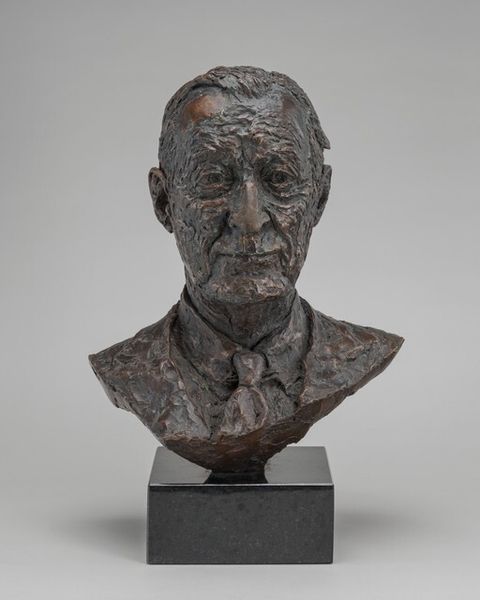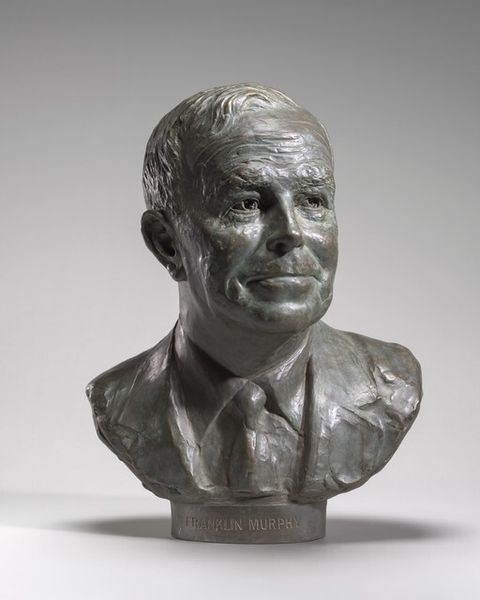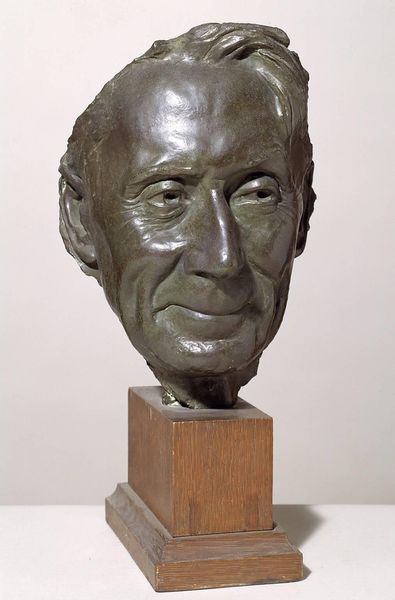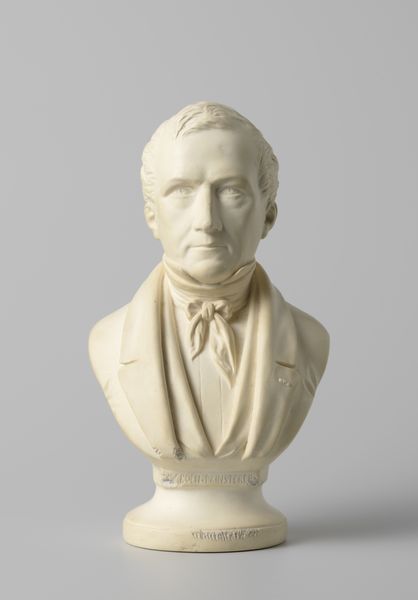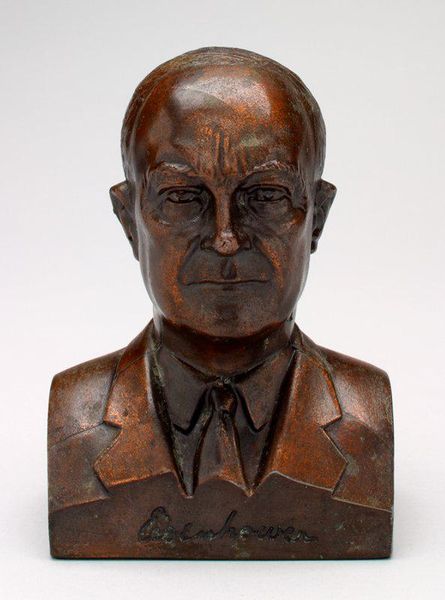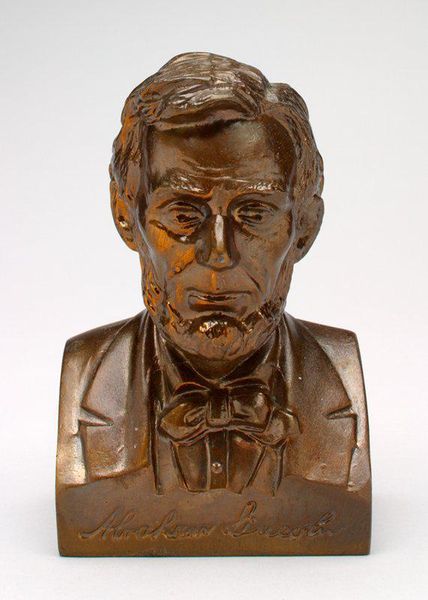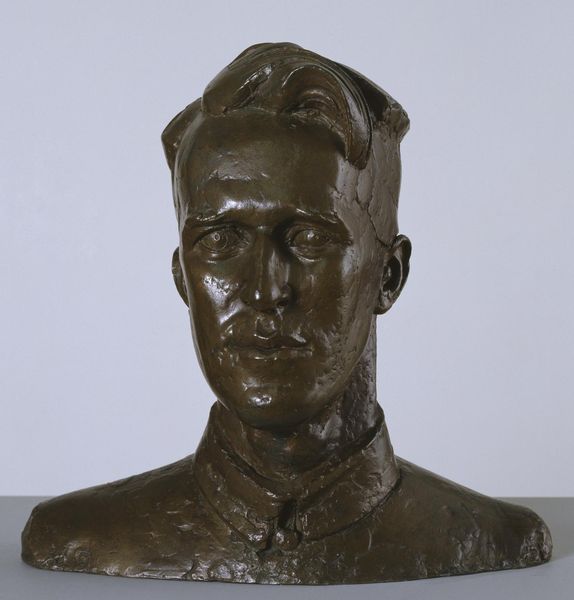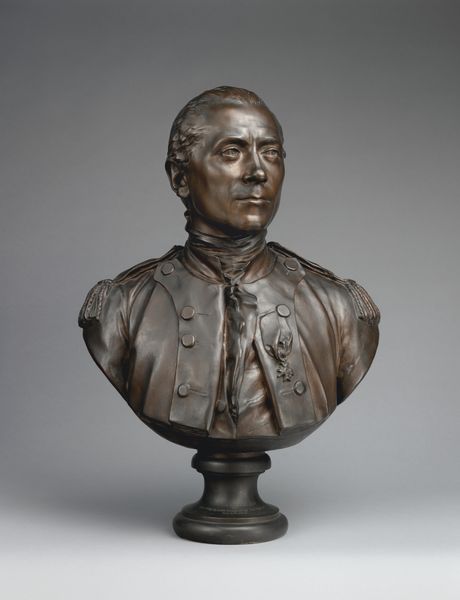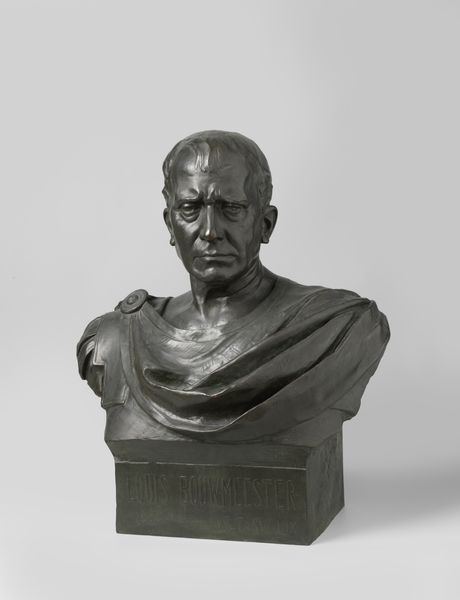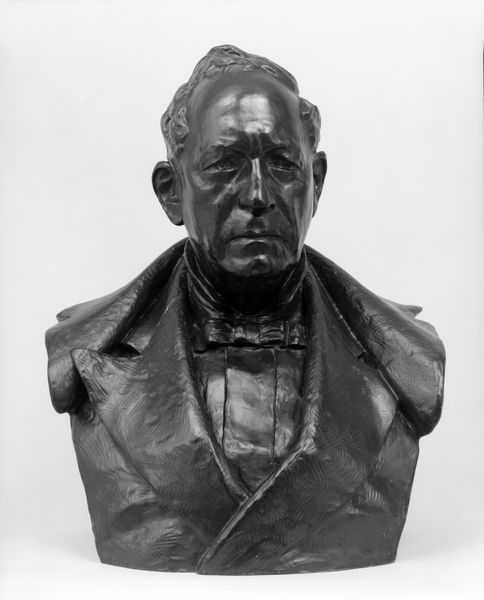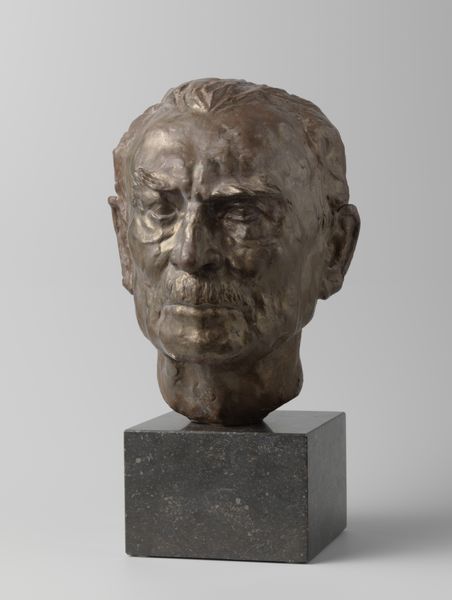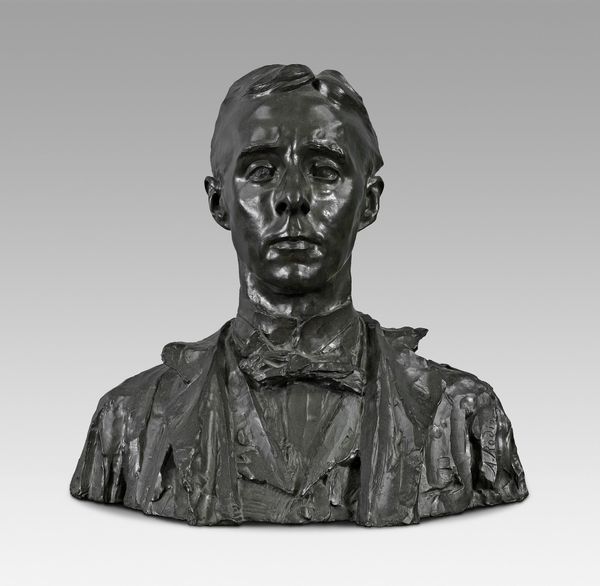
Dimensions: unconfirmed: 440 x 480 x 305 mm
Copyright: © The estate of F.E. McWilliam | CC-BY-NC-ND 4.0 DEED, Photo: Tate
Editor: Here we have F.E. McWilliam's bronze portrait bust of Isaac Wolfson. The rough texture gives it a sense of immediacy. What can you tell us about the process of creating this piece? Curator: I'm drawn to the labor embedded in this sculpture. The bronze casting, a process involving considerable physical effort, speaks to the industrial context of McWilliam's time. Notice how the surface treatment reflects the artist's hand, challenging the notion of pristine, untouchable art. Editor: So it's about the act of making as much as the likeness? Curator: Precisely. The materiality of the bronze and the visible traces of its creation invite us to consider the social conditions of its production and consumption. Editor: I never thought of portraiture in such a grounded way before. Thank you! Curator: It shifts our focus, doesn't it? From simply admiring the subject to understanding the world that shaped both the artist and his materials.
Comments
tate 6 months ago
⋮
http://www.tate.org.uk/art/artworks/mcwilliam-portrait-bust-of-isaac-wolfson-t06669
Join the conversation
Join millions of artists and users on Artera today and experience the ultimate creative platform.
tate 6 months ago
⋮
McWilliam entered the Slade School of Art in 1928 where he met Henry Moore, who became a life-long friend. In the mid-1930s McWilliam lived and worked in Hampstead and was part of the avant-garde group of London artists. He was deeply impressed by the International Surrealist Exhibition of 1936. Although the subjects of McWilliam's sculptures were mostly drawn from his imagination, he periodically accepted commissions for traditional portrait sculpture. This 'Portrait Bust of Isaac Wolfson' is of particular relevance to the Tate Gallery. Wolfson (1897-1991) set up a Foundation to advance health, education and youth activities and was a major donor to the Tate Gallery, Liverpool. Gallery label, August 2004
